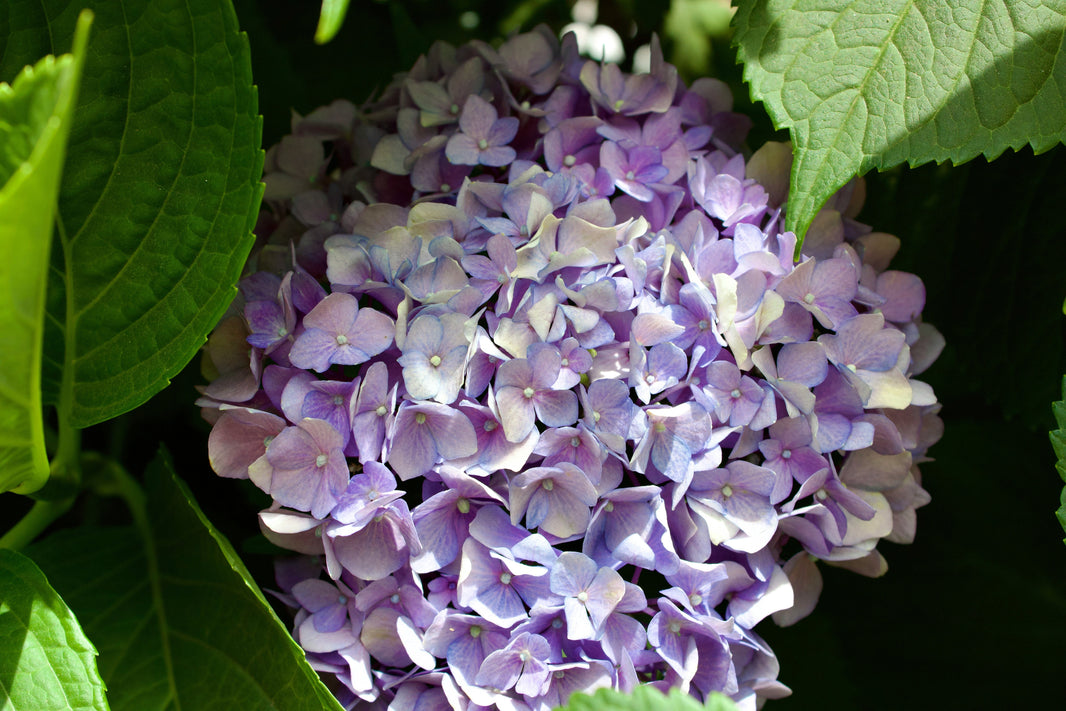Have you been dreaming of turning your love for flowers into a thriving business? Becoming a flower vendor can be a highly rewarding career for those with a passion for blossoms and an entrepreneurial spirit. From creating stunning bouquets to brightening someone’s day with a flower arrangement, being part of this vibrant industry is a joy for many. But where do you start? What are the steps to take to ensure a successful flower vending business? This article will guide you through all the essential details.
The floral industry is a realm rich with possibilities. Whether you're selling freshly picked garden roses at a weekend farmer's market or high-end arrangements for weddings, there is always demand for florals. Flowers play a role in nearly every major life celebration. From weddings to funerals and everything in between, florists find themselves at the heart of moments that matter.
Before you leap into this venture, it’s vital to understand the groundwork that needs to be done. Starting your floral business involves more than just picking pretty blooms. Licensing, business planning, flower sourcing, and building a customer base all require clear strategy and effort. Each element of the process plays a significant role in achieving long-term success.
For example, obtaining a flower vendor license is one of the first and most critical steps. Without proper licensing, even the most beautiful bouquets could land you in trouble with local authorities. Similarly, finding trusted suppliers for wholesale flowers will ensure you deliver quality while still turning a profit. And, of course, setting up your sales points effectively can make or break your business.
This guide will break down each of these steps in detail. You’ll learn about the practical and legal aspects of becoming a flower vendor. You'll also explore tips on sourcing flowers, setting up shop, and designing a business that thrives in your community.
By the end of this article, you’ll have the tools, clarity, and confidence to get started as a flower vendor. Whether you’re envisioning a mobile flower cart, a market stall, or even a small boutique shop, we’ve got insights tailored to your business goals. Not only will you get a clear path forward, but you’ll also discover how a trusted supplier like WholesaleFlowers.net can become an invaluable partner in your success.
If turning your love for flowers into a business feels like a distant goal, this guide will help bring it closer to reality. With careful planning, attention to detail, and the right resources, you’ll soon find yourself part of an industry that not only celebrates beauty but also thrives on it.
Laying the Foundation for Your Flower Vending Business
Understanding the Role of a Flower Vendor
A flower vendor serves as the crucial bridge between growers and customers. It’s your job to source fresh, high-quality flowers and arrange them into products that delight buyers. Beyond this, your role involves keeping up with trends in floral design, creating an inviting sales environment, and forming lasting connections with customers. Being able to balance creativity with practicality is a skill every successful flower vendor needs.
Start by identifying why you want to enter the floral industry. Passion for flowers and creativity alone won’t sustain your business. You’ll need to understand customer needs, competition, and the effort required. For example, flower vending involves early mornings, particularly if you’re sourcing from markets or growers directly. It’s also seasonal, with peaks around holidays like Valentine’s Day and Mother’s Day.
A good flower vendor also knows how to manage inventory effectively. Flowers are perishable, which means proper storage and quick turnover are essential to avoid losses. Building a steady routine, including time for sourcing, preparing arrangements, and selling, ensures your products remain fresh and desirable.
Importance of Market Research
To become a flower vendor successfully, you first need to understand your target market. Who are your customers? What flowers are most popular in your area? Is there a particular style of arrangement that sells well? Conducting thorough market research gives you this critical insight.
Begin by visiting local florists, farmer’s markets, and event vendors to study the competition. Observe the pricing, presentation, and product types. Note the special touches that successful vendors include, such as pre-arranged bouquets or discounts for bulk purchases. Analyze what customers are buying and why.
Another aspect of market research involves understanding the demographics of your area. For instance, younger customers may prefer trendy arrangements, while traditional bouquets might appeal more to an older demographic. This information will guide you in selecting the products and services your business should focus on.
Securing the Necessary Licenses and Permits
Understanding the Importance of a Flower Vendor License
Setting up your flower vending business starts with getting the right approvals. A flower vendor license ensures you can operate legally within your community. The requirements for obtaining this license vary from region to region, so it’s essential to familiarize yourself with the local laws. Without it, even the most stunning bouquets can put you at risk of fines or business closure.
Your city or county government office is the best place to begin your research. Reach out to the local business licensing department to understand the paperwork required. Often, you'll need a completed application, proof of residency, and a business name registration. Certain areas may also require background checks, especially if you plan to sell flowers in public spaces.
The costs of a flower vendor license depend on your location and the type of business you're running. Some regions charge a flat fee, while others base costs on turnover or the scale of the business. Budget for this expense as part of your startup costs. Keep in mind that your flower vendor license often needs renewal annually.
It’s also worth noting that many locations require additional permits for vendors selling in public spaces. If you plan to set up at a farmer’s market or street fair, you’ll likely need another special event permit. These requirements can seem overwhelming at first, but they are manageable with proper planning and organization.
Obtaining a flower vendor license also demonstrates professionalism. It reassures customers and partners that your business complies with local regulations. This builds trust and credibility, which is invaluable in a competitive industry like floristry. It also positions you as a reputable vendor that customers are more likely to support over unlicensed sellers.
Beyond the flower vendor license, check if there are any specific certifications required for handling fresh goods. For example, you may need to comply with health and safety regulations if you’re preparing edible bouquets or flowers for weddings and events. Taking these requirements seriously will protect your business and ensure a seamless operation.
Lastly, store your documents safely and keep digital copies accessible. If authorities inquire about your flower vendor license or other permits, being prepared shows both responsibility and organization. It’s a small detail that can make a big difference in how your business is perceived.
Zoning Laws and Choosing a Business Structure
Before you start selling flowers, you need to determine where and how you’ll operate. Zoning laws regulate business activities in urban, suburban, and rural areas. These laws outline where flower vending businesses are permitted, whether it’s at markets, roadways, or a floral storefront. Ignoring these laws can jeopardize your business, so take time to review them.
Start by consulting your local zoning office or planning department. They'll provide detailed maps and documents explaining the zoning restrictions in your area. If you’re planning to operate a mobile flower cart, for example, you may need permission to use certain streets or parks. Similarly, a storefront location may have restrictions on signage or parking.
Your choice of business structure will also impact how you operate. Will you be a sole proprietor, run a limited liability company (LLC), or form a partnership? Each option has its own legal and financial implications, so think carefully about what suits your goals. For example, an LLC offers liability protection, which could help protect your personal assets in case of any business challenges.
Your business structure will also determine how you file taxes. For new entrepreneurs, consulting with a small business advisor or attorney can clarify the decision-making process. Taking the time to choose the best structure ensures your flower vending business is built on a strong foundation.
Another critical factor is securing a business location permit if you plan to operate a permanent shop. It ensures your vending site complies with fire, health, and safety codes. Similarly, if you plan to sell flowers from your home, you may need a home occupation permit.
Review insurance options as another layer of security. Liability insurance, for example, protects against lawsuits in case of accidents, like a customer slipping in your shop. Having these measures in place gives you peace of mind and keeps your operations running smoothly.
Aligning your business vision with zoning laws and selecting the right business structure plays a key role in your success. Starting with clarity and compliance will save you headaches as your flower vending enterprise grows.
Finding Reliable Flower Suppliers and Maintaining Inventory
Importance of Reliable Suppliers
When it comes to sourcing flowers, reliable suppliers are the backbone of your business. The quality of your flowers directly impacts your reputation, customer satisfaction, and sales. To become a flower vendor known for delivering fresh and vibrant blooms, finding the right suppliers is essential.
Start by researching local flower growers or wholesale flower markets in your area. Building strong relationships with local suppliers not only ensures fresher flowers but can also provide opportunities for customization. Local growers often have unique varieties that aren't available from larger distributors, giving you an edge in offering something special to your customers.
If local sourcing isn’t always feasible, consider working with trusted national or international wholesale flower suppliers. Platforms like WholesaleFlowers.net allow you to purchase flowers in bulk, ensuring high-quality products at competitive prices. Additionally, their wide selection means you can cater to all kinds of floral arrangements, from everyday bouquets to wedding decorations.
Visit flower markets and establish a rapport with suppliers. Look for vendors who emphasize quality and timely delivery. Understanding their processes for harvesting, storing, and transporting flowers can provide assurance that your products will meet your standards. Don’t hesitate to ask for samples to evaluate their offerings before committing to long-term partnerships.
It’s also essential to diversify your supplier base. Relying on a single supplier can be risky, especially during high-demand seasons or unforeseen disruptions. By working with multiple providers, you ensure a consistent supply of flowers even if one supplier is unable to deliver.
Payment terms and flexibility are additional factors to consider. Some suppliers may offer discounts for early payment or bulk purchases, which can help maintain healthy profit margins. Understand their policies and negotiate terms that align with your business needs.
Lastly, communication is key to maintaining fruitful supplier relationships. Regular check-ins, providing feedback, and discussing seasonal trends or requirements ensure your suppliers are always in tune with your needs. A good supplier should act as a partner in your success rather than just a transactional resource.
Creating an Efficient Inventory System
Once you have reliable suppliers, the next step is implementing an efficient inventory system. Flowers are perishable, so managing stock wisely is crucial to minimizing waste and maximizing profits. The key is striking a balance between having enough product to meet demand without overstocking.
Start by tracking customer preferences and sales trends. Which flowers are most popular in your area? When are peak sales periods, such as Valentine’s Day, Mother’s Day, or wedding season? This data will help you predict demand and order inventory accordingly.
Invest in proper storage to keep your flowers fresh for as long as possible. Refrigeration units are a must for any serious flower vendor. They slow down the wilting process and keep flowers vibrant. Regularly monitor and maintain your refrigeration equipment to ensure optimal conditions.
Adopt a first-in, first-out (FIFO) inventory strategy. This means selling older flowers before newly acquired stock. Training your staff to follow this practice will ensure minimal waste. Make it a habit to inspect inventory daily, discarding any flowers that don’t meet your quality standards.
Consider leveraging inventory management software for real-time tracking. Many modern tools allow you to monitor stock levels, set reordering triggers, and analyze sales patterns. These systems save time and reduce the risk of human error in manual inventory tracking.
Another way to streamline inventory is by offering pre-order services for customers. This is especially useful for events like weddings or corporate events where you can predict demand. By collecting orders in advance, you can purchase exactly what you need, reducing surplus inventory.
Lastly, get creative with any excess stock. If flowers start to wilt, consider incorporating them into discounted bouquet deals or drying them for longer-lasting arrangements. Having a plan for older flowers prevents waste while appealing to budget-conscious customers.
Setting Up Sales Points and Creating a Marketing Strategy
Choosing the Perfect Sales Points
When starting as a flower vendor, selecting the right sales points is crucial. These are the places where you'll sell your products, and their success hinges on foot traffic, accessibility, and customer interest. Whether you're thinking of opening a physical store, setting up at markets, or running a mobile flower cart, careful planning can make all the difference.
For many new flower vendors, farmer’s markets are an excellent starting point. They attract customers who appreciate fresh, locally sourced products, making them ideal for showcasing your flowers. A vibrant, well-decorated stall draws attention, so invest in visually appealing displays with ample signage. Ensure your booth is stocked with a variety of flowers to cater to different preferences, from single stems to pre-arranged bouquets.
Another popular option is running a mobile flower cart. With a cart, you have the flexibility to set up in different locations and reach various customer bases. Parks, busy streets, and urban shopping districts are great places to park your cart. Keep in mind that different locations may require distinct permits, so double-check regulations before setting up shop.
Pop-up shops in malls or community centers are also growing in popularity among flower vendors. These spaces allow you to test the waters in a semi-permanent location without committing to a full storefront. Look for spots that are easily accessible and have good visibility to passersby.
If you envision a more permanent setup, a physical flower shop could be your goal. Choose a location that's central to your target audience and has steady foot traffic. Proximity to complementary businesses, such as bakeries or wedding planners, can also drive customers to your store. Ensure your shop has an inviting ambiance, emphasizing freshness and creativity with your floral displays.
During holidays or special events, temporary kiosks can be a lucrative option. Valentine's Day, Mother's Day, and Christmas are peak floral seasons, so setting up in high-traffic areas during these times can boost sales significantly. Be sure to promote these pop-ups thoroughly to maximize awareness and attract customers.
Lastly, don’t neglect the online side of your business. A strong e-commerce platform can act as a digital sales point, reaching customers beyond your immediate area. Offering delivery or pick-up options enhances convenience, making it easier for busy customers to shop from you.
Building an Effective Marketing Plan
Marketing is central to the success of your flower vending business. It increases visibility, attracts customers, and builds brand loyalty. To become a flower vendor with a strong presence in your community, an effective strategy is a must.
First, create a brand identity. This includes choosing a memorable business name, designing a logo, and deciding on brand colors. These elements should reflect your business's personality, whether it’s elegant, playful, or eco-friendly. Consistent branding across your materials, signage, and packaging helps establish recognition.
Leverage social media platforms to connect with potential customers. Instagram, in particular, is an excellent platform for floral businesses due to its visual nature. Share curated photos of your arrangements, behind-the-scenes content, and special promotions. Use hashtags like #FlowerVendor or #FreshFlowers to reach a wider audience.
If you're targeting a local customer base, use Facebook for community engagement. Joining neighborhood groups and promoting your events or special deals can drive foot traffic to your sales points. You can also run targeted ads to reach specific demographics in your area.
Build an email list to keep in touch with customers. Send regular newsletters featuring updates about seasonal products, discounts, and upcoming events. Offering a small discount or free bouquet wrapper in exchange for an email subscription can encourage sign-ups.
Networking is another vital marketing strategy. Collaborate with event planners, wedding organizers, or local businesses. For instance, partnering with a nearby coffee shop to provide small table arrangements can introduce you to their clientele while enhancing their ambiance.
Local advertising, such as placing ads in community publications or sponsoring events, can also drive awareness. Guerilla marketing techniques like distributing free flowers with your contact information attached can create memorable first impressions and generate goodwill.
Lastly, offer loyalty programs to retain customers. A "buy five bouquets, get one free" card is a simple yet effective way to encourage recurring purchases. Happy customers who feel valued are more likely to share their experiences with friends and family, creating word-of-mouth marketing for your business.
Becoming a flower vendor is a rewarding way to turn your passion for flowers into a successful business venture. Throughout this guide, we’ve outlined the essential steps to help you get started, from obtaining your flower vendor license to crafting a marketing strategy that draws customers in.
First, we emphasized the importance of securing necessary licenses and permits. Your flower vendor license ensures your business is compliant with local regulations, giving you the peace of mind to focus on growing your operations. Taking care of zoning requirements and choosing the right business structure also lays a strong foundation for success.
Next, we explored the process of finding reliable flower suppliers. Choosing the right partners for sourcing your flowers is vital to maintaining quality and meeting the needs of your customers. Platforms like WholesaleFlowers.net make it easy to purchase wholesale flowers, offering top-notch products at competitive prices. Securing flowers in bulk not only helps you stay prepared for peak seasons but also keeps your costs manageable.
We then discussed the importance of setting up effective sales points, including physical storefronts, mobile flower carts, or pop-up shops. Each option offers unique opportunities to meet your customers where they are. Incorporating online sales points as part of your strategy provides an additional way to reach more buyers, offering convenience and accessibility.
Building an effective marketing plan is critical for any flower vendor looking to thrive in a competitive market. From creating a memorable brand identity to utilizing social media, email marketing, and collaborations, your efforts can go a long way in growing your customer base and building loyalty. Creative campaigns and consistent engagement will help you stand out as you start selling flowers.
Finally, remember that continuous improvement and adaptability are keys to sustaining your flower vending business. Whether you’re introducing new floral arrangements, refining your inventory management, or exploring new sales avenues, staying innovative ensures your business remains relevant and successful.
If you're ready to stock up and get started, consider WholesaleFlowers.net as your go-to source for the best wholesale flowers. They offer a wide selection of flowers in bulk that cater to all your floral needs. Visit their All Flowers section to explore options perfect for kickstarting or expanding your business.
Now is the time to bring your dream of becoming a flower vendor to life. With proper planning, dedication, and a love for flowers, you can create a flourishing enterprise that brightens your community one bloom at a time.






